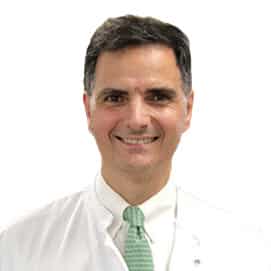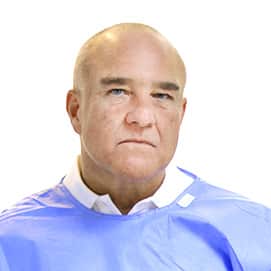The choice of therapeutic measures is influenced by various factors:
- size, extent and location of the tumor
- absence or presence of metastases in the cervical lymph nodes
- general condition of the patient
To date, the most effective and most recognized methods of treating malignant tumors in the upper respiratory and digestive tract are surgery and radiation therapy. The latter is carried out repeatedly in the form of radiochemotherapy.
Operation
Tumors in the oral cavity and pharynx are removed (resected) through the mouth (transorally) or through the dissection of the lower jaw. Removal (resection) can be done with a scalpel or by laser surgery. Advantage laser-surgical treatment (resection) is that after it there is often no need for subsequent plastic reconstruction.
In the treatment of carcinomas of the larynx or deep-seated carcinomas of the pharynx, a distinction is made between surgical techniques with a scalpel or laser surgery performed through the mouth (transorally) and techniques performed externally through the soft tissues of the neck (transcervical). During transoral surgery, only a partial resection can always be performed, while transcervically it is possible to remove part of the larynx and the entire larynx (laryngectomy). The decision to use this or that technique is made, on the one hand, depending on the location and size of the tumor, on the other hand, depending on the regional status of the cervical lymph nodes. With laser-surgical resection, as well as with partial resection of the larynx, the chances of preserving functionally significant structures are higher.
Extended resection often requires repair of the tissue defect with a stalked, pedunculated, or microvascular anastomosed graft from the patient's own tissue, such as from the forearm, pectoral muscle, or flank region. Often excellent functional and aesthetic results are achieved in this way.
The prognosis in patients with cancer in the upper respiratory and digestive tract depends directly on whether and how much the tumor has spread to the lymph nodes (lymphogenic metastasis). Accordingly, therapy is carried out within the framework of the primary tumor, as well as therapy in the area of \u200b\u200bthe surrounding (regional) lymphatic drainage pathways. The type of therapy for the primary tumor gives direction in deciding the choice of methods. This includes the removal of cervical lymph nodes in various volumes and / or radiation therapy, respectively, radiochemotherapy.
An individual approach to treatment depends on the size and location of the primary tumor, on the absence / presence, as well as on the prevalence of suspicious lymph nodes in terms of metastasis, and on the general condition of the patient.
Head of the Clinic of Oncology, Hematology and Palliative Medicine
Head of the Clinic for General, Visceral, Thoracic and Endocrine Surgery
Head of the Clinic for Radiation Therapy and Radiological Oncology
Video
Request appointment
Useful links
Photo gallery












